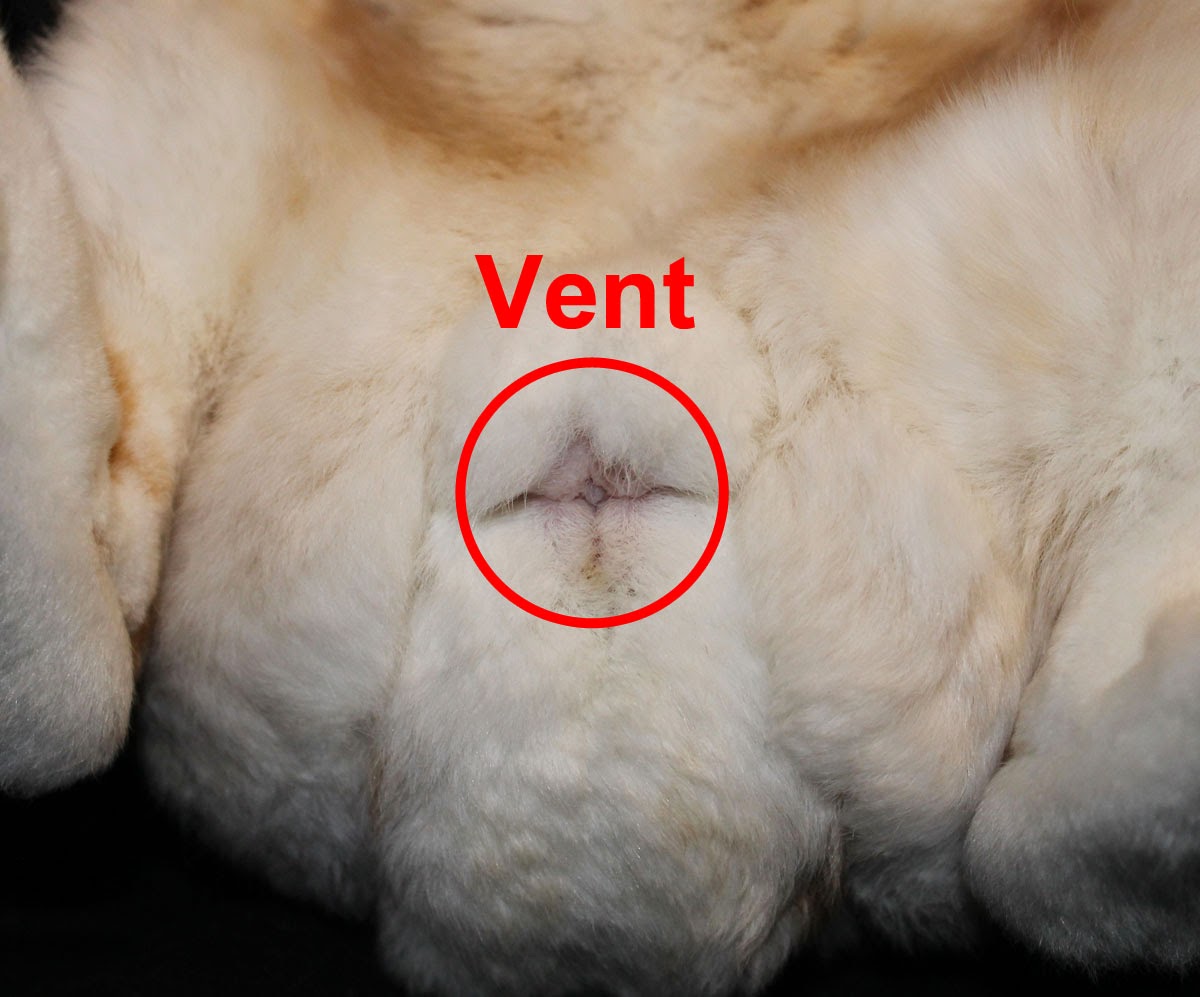We
covered the basics of genetics last week. Rabbit colors are determined by no fewer than five genes, though. To expand from doing simple, one-gene Punnett squares to two or more genes is fairly simple, although it may take some practice for some people.
With a single gene, Punnett squares are 2x2 (plus labels). For two genes, it becomes 4x4. Three is 8x8, and so on. However, it's not as complicated as you might think. To fill out a two-gene Punnett square, set up the 4x4 grid. Focus on one gene-series at a time. Say that you're working with a rabbit that is Aa for the first gene-series you're working with. Write each gene, separately, as a label for each of the first two columns. Then, write them again, in the same order as labels for the last two columns. For the second set of genes (we'll say that they're Bb), write the first gene as the label for the first two columns, and the second gene for the last two columns. If both parents are AaBb, you should get something that looks about like this:

From there, it's just a matter of combining the labels. The first square gets A from the top, A from the side, B from the top, and B from the side. Continue filling out each square until they're all full. Remember that capital letters are usually written before lower-case, to show which trait the offspring will show. You should end up with something like this:
If you're good with patterns, you may notice that the Punnett square you would have gotten from the first set of genes (As) is repeated four times. Zoom out your focus and you notice that the second set of genes makes a Punnet square, where each square is a quadrant on the combined square. (Sorry for getting technically-termed on you...I'm not really sure how else to say it.)
A second method is to make a Punnet square for the first gene-series (the As). Thus:
Then, copy it until you have a new 2x2 grid made up of those:
You have now set yourself up to do a Punnet square for the next set of genes. Put parent #1's first gene of that series over the left-most column of squares, and the second gene over the rightmost. Do the same with the second parent's genes for upper and lower rows.
Then complete the larger Punnet (for the second gene) by filling each of the four smaller squares within each set with the same combo.
The end result is the same as before.
If you wanted to further expand to a third gene, you would copy
this Punnett square to make the next one for the third gene. For a fourth gene, use the third compound Punnett. Repeat
ad nauseam.
Once you have your compounded Punnett square, you can list all potential genotypes. For the two-gene set, you have:
- AABB (1 in 16)
- AaBB (2 in 16)
- AABb (2 in 16)
- AaBb (4 in 16)
- aaBB (1 in 16)
- aaBb (2 in 16)
- AAbb (1 in 16)
- Aabb (2 in 16)
- aabb (1 in 16)
To see the list, you might just want to read through the squares, and tally if you come across a repeat.
To get the phenotypes, look at the most dominant trait for each letter. You should get:
- A-B- (AABB, AaBB, AABb, AaBb = 9 in 16)
- aaB- (aaBB, aaBb = 3 in 16)
- A-bb (AAbb, Aabb = 3 in 16)
- aabb (only aabb = 1 in 16)
I know all of this may be hard to grasp, especially for those who have a hard time with patterns or math, so I promise I will make a worksheet to go along with this before much longer. In the meantime, grab a piece of scrap paper, draw a few squares, and try out a few different combinations: AABb x AaBB, aaBB x Aabb, etc. Have fun! (Oh, and feel free to
email me if you want me to check your work.)
Topics still to cover: simplifying Punnett squares for homozygosity, exceptions to simple inheritance, and specifics of rabbit colors.

























































